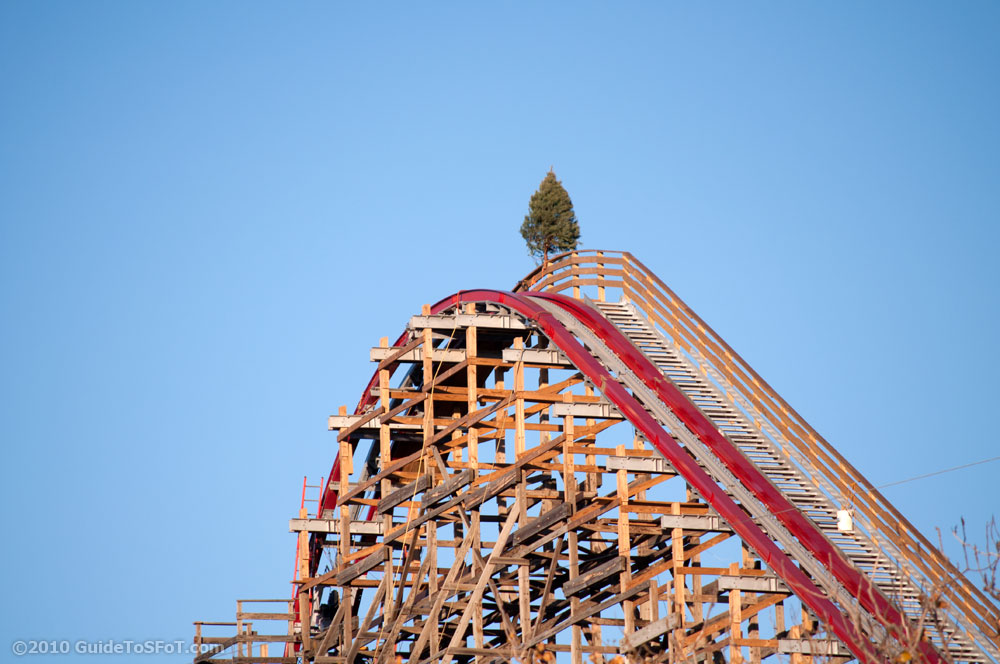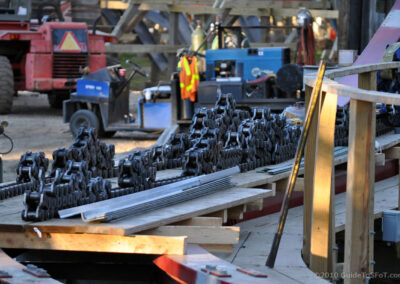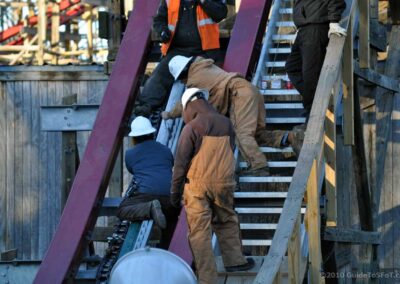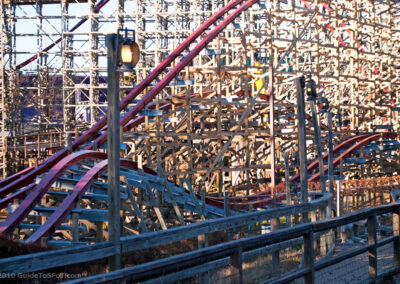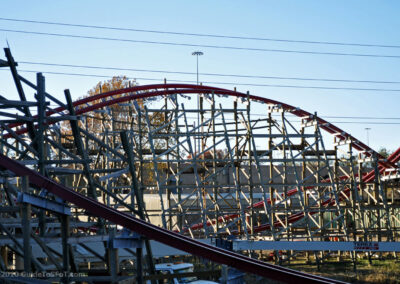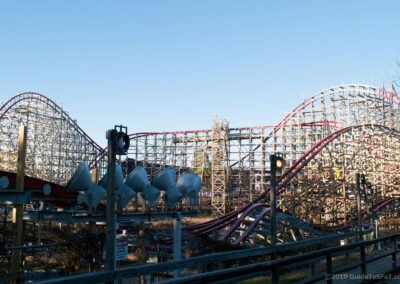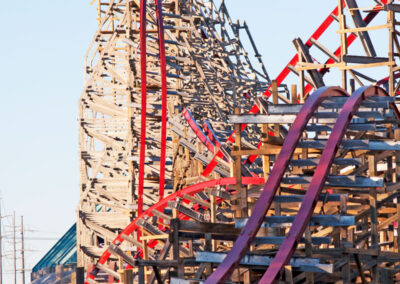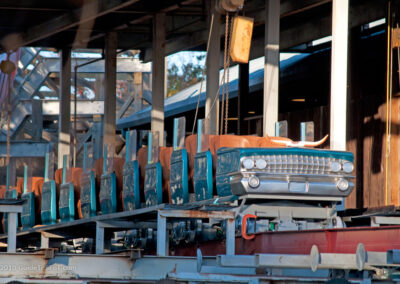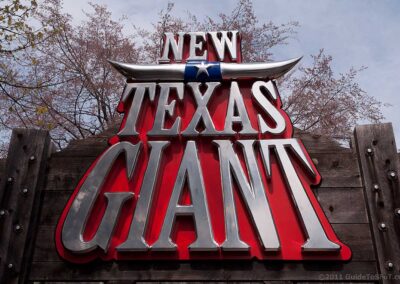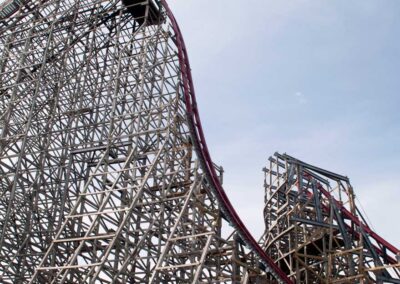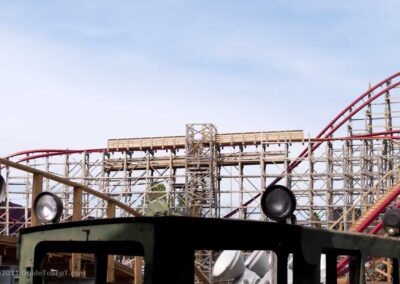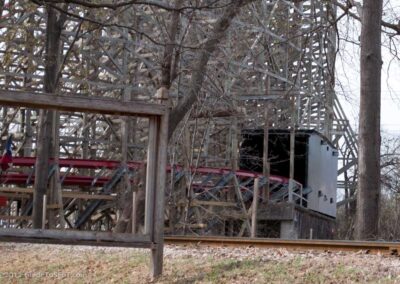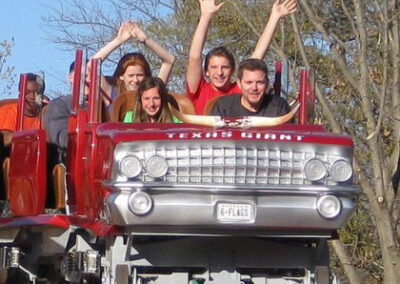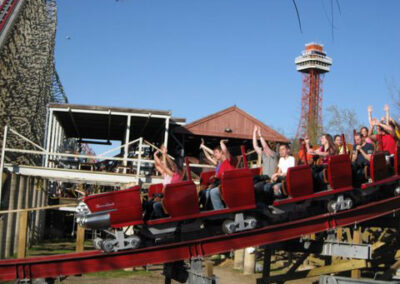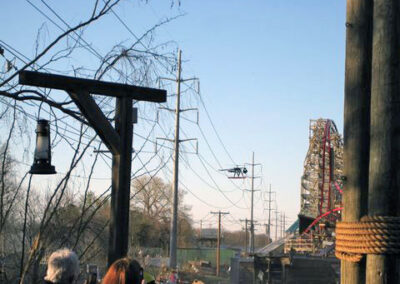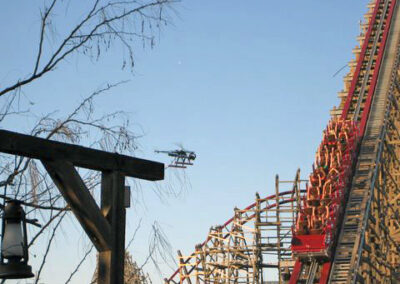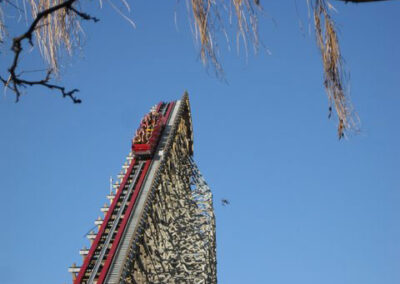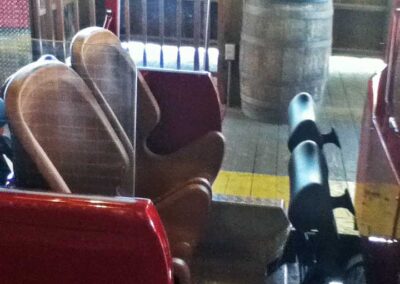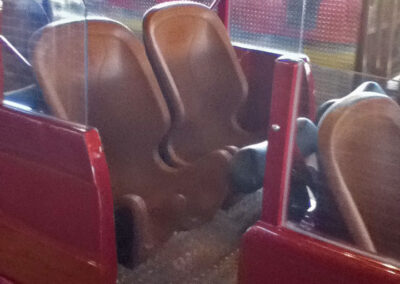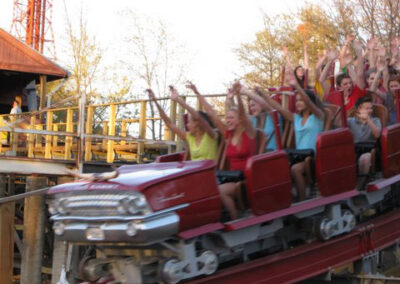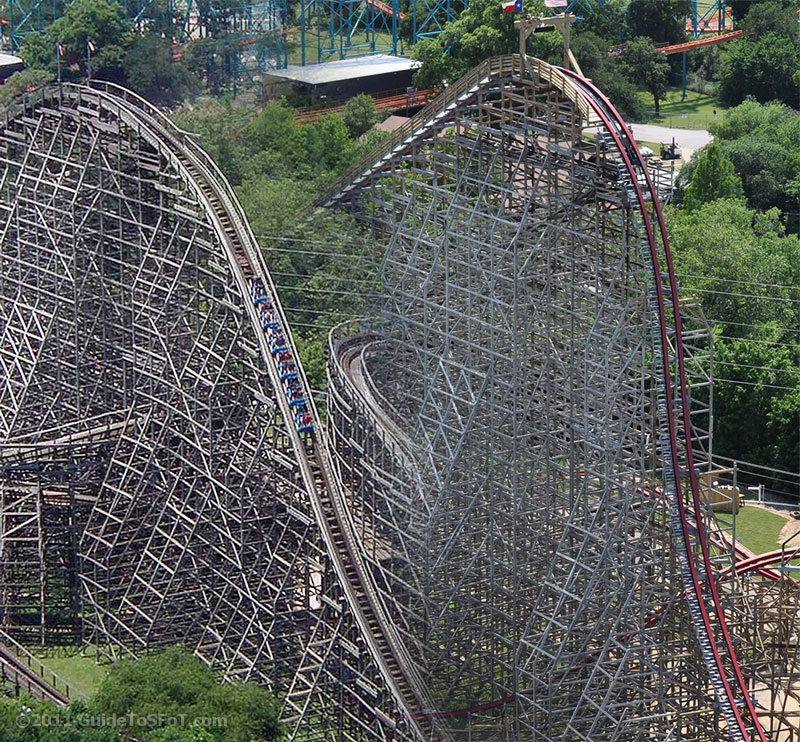In Part 2 of Texas Giant: Reinvented, we looked back at our extensive construction coverage of the new coaster between June and October of 2010.
In this third and final part, we’ll see construction wrap up and the attraction open, answering the industry’s question of if a nearly 20-year-old, rough wooden coaster could be revitalized with elements only thought possible on steel coasters.
We pick up after our last construction update from late October 2010, just as the park reopens for Holiday in the Park…
December 8, 2010
After reopening for Holiday in the Park, Six Flags over Texas announced via their Facebook page that the Giant’s final piece of track had been installed. An evergreen “topping tree” was installed at the ride’s tallest point, a long-held tradition with ironworkers.
In the announcement, the park also revealed the stats of the ride’s three overbanked turns. The first, second, and third overbanked turns reach angles of 103°, 105°, and 112° respectively.
December 12, 2010
With trackwork complete, workers turned their attention to feeding the massive chain up the lift hill. Cranes were spotted in various areas around the track, reportedly replacing worn-out supports. Testing is expected to begin in late December or January.
With the ride apparently progressing so quickly, fans are optimistic about the ride opening at the start of the 50th season in March, but the park remains mum about an opening date.
January 20, 2011
Testing for the New Texas Giant began January 19, initially with a shortened two-car train running the course—truly a bizarre sight. The park also revealed that while the ride was still planning on a spring opening, it would not be ready for the park’s March 5 opening.
A passing news helicopter also captured some great, early video of the just-completed ride, shown below.
March 5, 2011
Six Flags over Texas kicks off its 50th season on March 5, granting the public its latest look at the new Texas Giant’s progress. Changes from our last in-person update in December include a new sign, catwalks, and tunnels.
A few days later on March 8, the park announced that the new Texas Giant would open to the public on April 22, 2011.
March 10, 2011
With the finishing touches still being put on the ride and queue, the park held a New Texas Giant commercial shoot on March 10 with an open casting call for extras to fill trains. One of our then-forum members, Joseph Edwards, was present for the event and sent us the following photos and video from the special day.
The footage taken was ultimately used for a widely-aired TV commercial, also shown below.
The New Texas Giant Opens
April 22, 2011On April 22, 2011, the New Texas Giant officially opened to the public, generating overwhelmingly positive feedback. Enthusiasts and the public alike praised the multiple moments of airtime from the bunny hills, the overbanked turns, and the silky-smooth ride.
In addition to the numerous changes from the original layout, the New Texas Giant also featured new thematic elements including a giant fire-shooting oil derrick and three tunnels with mist and LED lighting. The station is themed to a garage to match the trains.
A few days after the New Texas Giant’s opening, GuideToSFoT created the following video compiled from footage provided by the park.
Texas Giant Before/After Comparisons
Drag the slider to see the changes between the Texas Giant and the New Texas Giant.
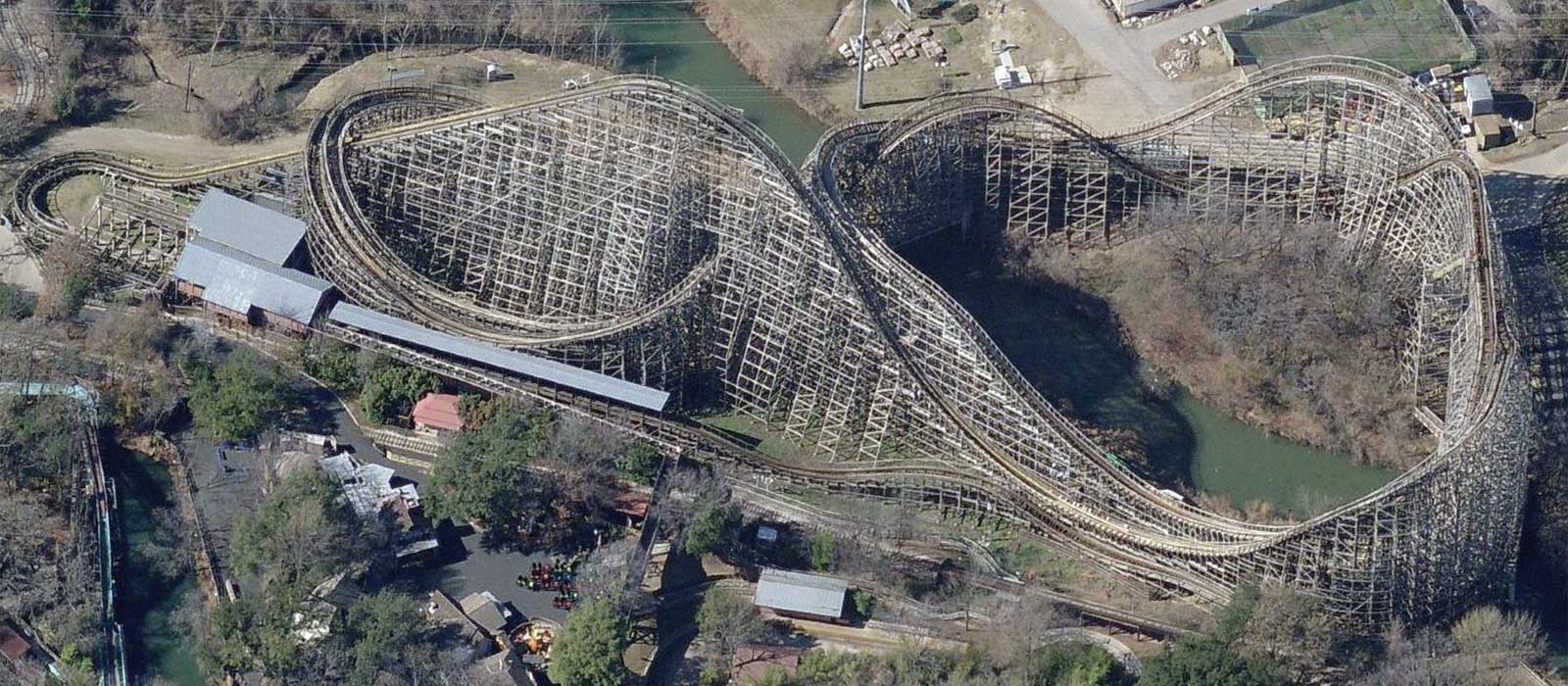
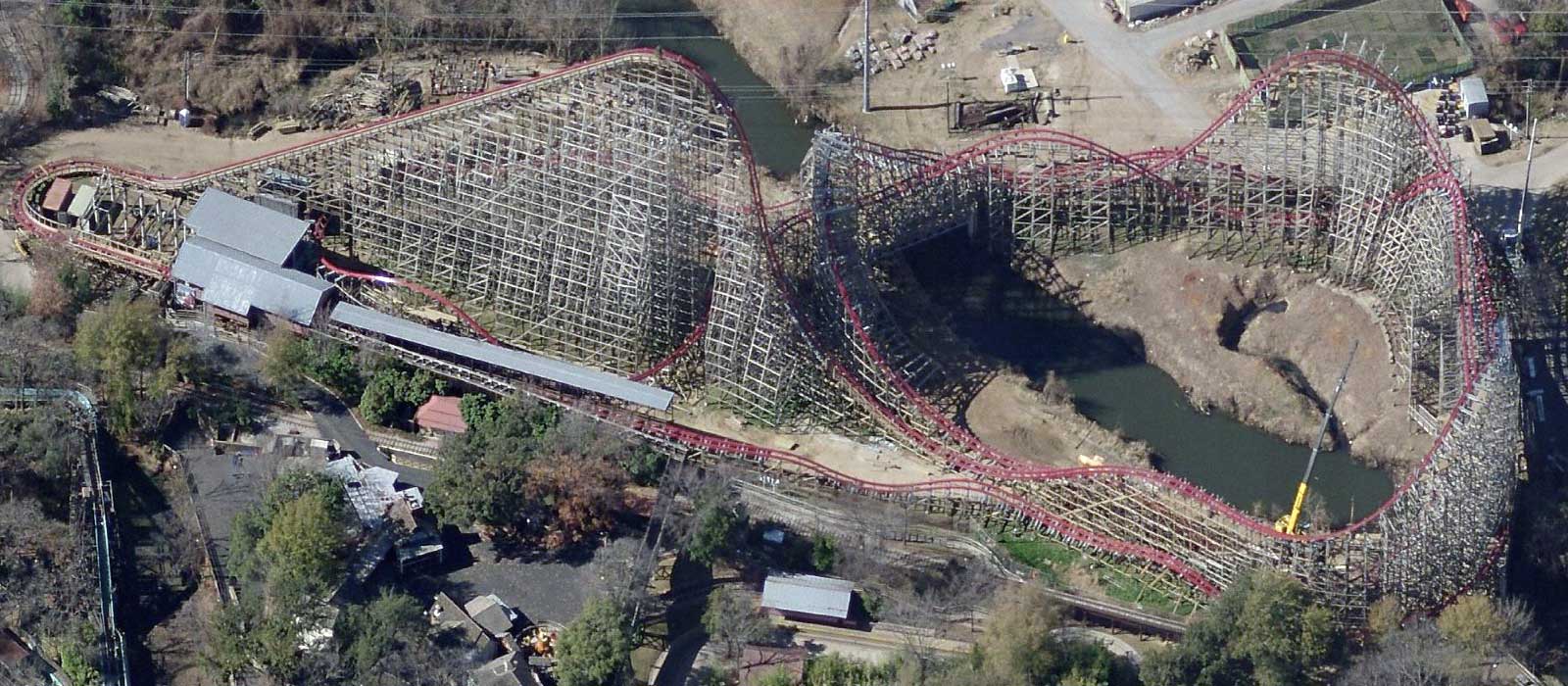
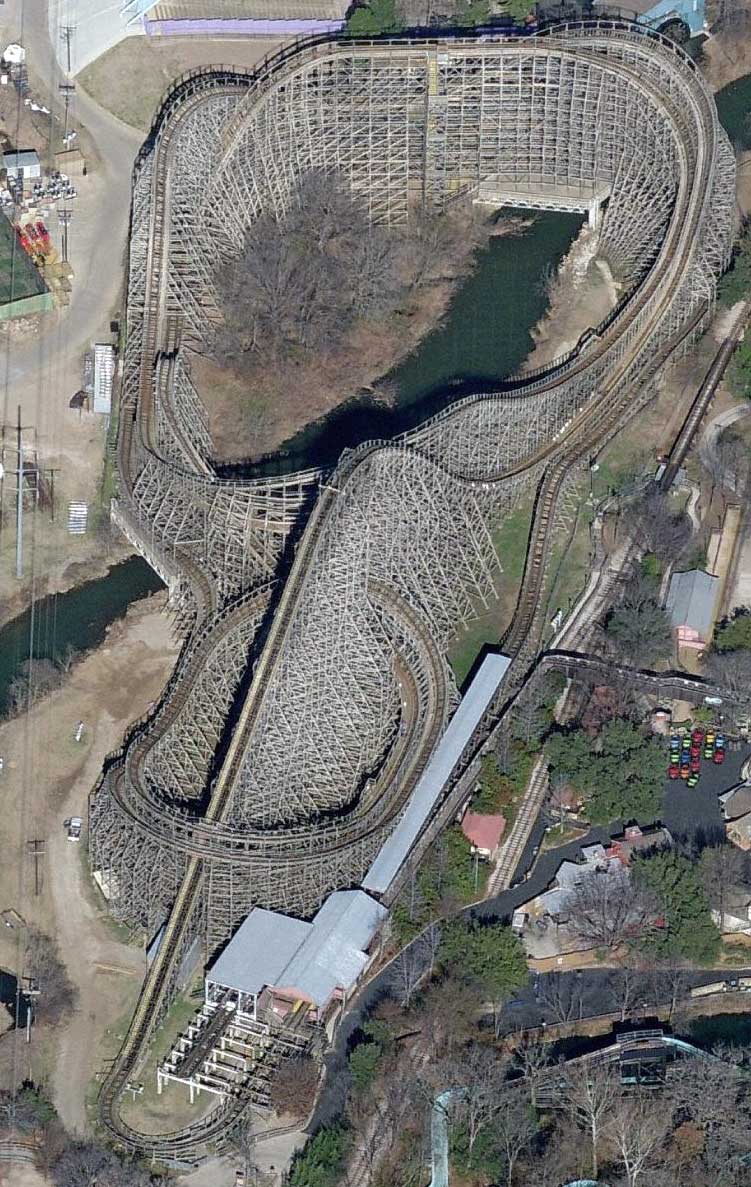

Aerial images used in comparisons above are courtesy Bing Maps and are ©2010-2011 NAVTEC, Microsoft Corporation, and Pictometry International.
Technical Look
Take a close look at the before/after images and you may notice the midcourse brake is considerably lower on the New Texas Giant than it was on the original, despite the lift hill being 10′ taller. Why is that?
The short answer is rolling resistance. Like other steel coasters, New Texas Giant’s trains have wheels with a polymer tread, which generate considerably more resistance (anywhere from 50-200% more¹) than the steel wheels of the original Texas Giant (and other wood coasters).² As the trains travel around the track and the wheels turn, energy is used deforming the tread, essentially converting some of the train’s speed to heat. The tradeoff is that the wheels can absorb vibrations and bumps in the track, providing that glass-smooth ride the New Texas Giant provides.
So the midcourse was lowered to account for the train losing more speed during the first half of the ride. This is also probably why the new layout ditched the original Giant’s double-helix around the lift—it simply wouldn’t have had the speed.
2. This is part of the same reason why freight trains are so much efficient at moving goods than trucks, even when normalizing for the same freight per mile. Freight trains’ steel wheels on steel track have considerably less rolling resistance than trucks’ rubber wheels on cement/asphalt.
New Texas Giant’s Impact
Six Flags over Texas took a gamble on the Texas Giant when they announced they’d be partially demolishing and rebuilding the iconic ride with a new track technology, but the bet paid off. Over a decade later, the New Texas Giant remains one of the park’s most popular, signature attractions.
Rocky Mountain Construction has since gone on to renovate over a dozen other wooden coasters with their I-box track, including turning the Rattler into the Iron Rattler at nearby Six Flags Fiesta Texas. Since the success of NTG and other projects, RMC has also become a major player in the coaster industry for new installations, such as Wonder Woman (also at SFFT) utilizing their “Raptor” track system.
The New Texas Giant was an impactful experiment for the amusement industry, successfully proving that an rough, old wooden coaster with poor ridership could be turned into an entirely new experience with benefits for guests and the park alike. Its daring layout pushed the boundaries for future attractions, making elements in successive rides steeper, faster, and crazier.
Fans of Six Flags over Texas eagerly await for the park to continue its legacy of innovation with another amusement first. Regardless of when or if that happens, the New Texas Giant has cemented its own place in coaster history, and all it took was being reinvented.
Sources
- Rolling resistance and industrial wheels. Hamilton Caster. (n.d.). https://www.hamiltoncaster.com/Portals/0/blog/White Paper Rolling Resistance.pdf

